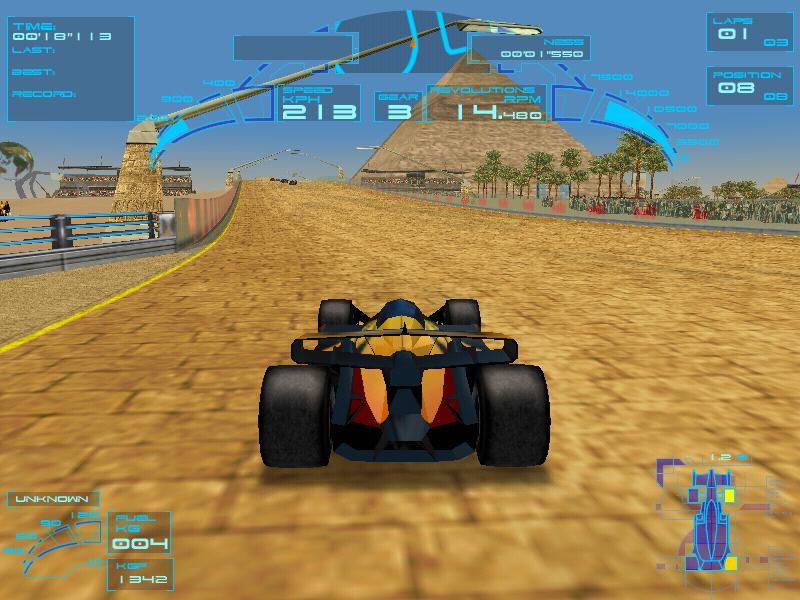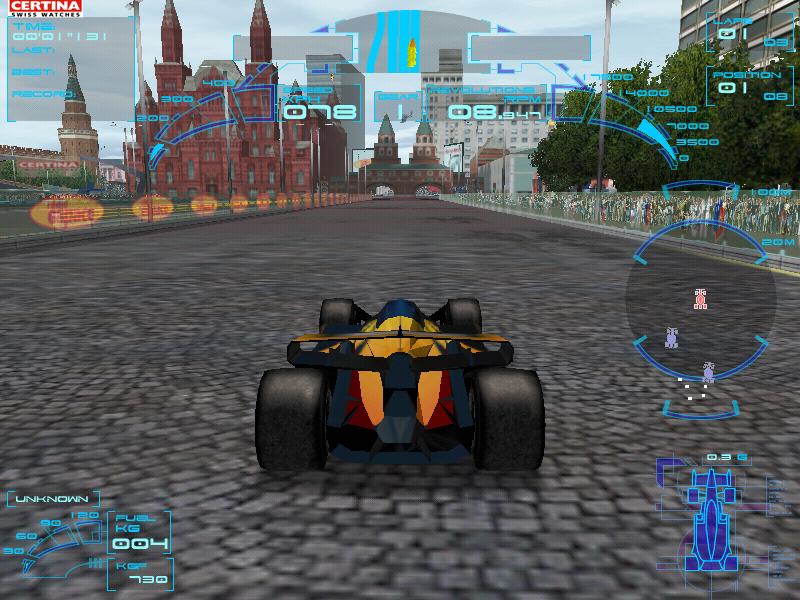Forgotten races of the future. That's probably the best way to describe the Speed Challenge in one sentence. This game appeared in 2002 and was released on PS2 and PC. It promised futuristic racing with realistic physics, unique tracks and contributions from the 1997 F1 World Champion himself. But it ended up being more of a forgotten experiment than a revolution.

Speed Challenge tried to deliver something between Formula 1 and Wipeout, but without the crazy power-ups or weapons. The cars looked like the monoposts of the future, with their low profile and aerodynamic shapes, but they still handled like regular racing specials. No flying, no jumping, just clean steering. And that's where the game scored - the driving model was arcade-like, but it also had hints of simulation. You had to brake in time, corner well, and manage to control the car at over 300 km/h (which is not unusual in formula cars these days either).
As the name suggests, UbiSoft took 1997 Formula 1 World Champion Jacques Villeneuve as a mentor for this game. The game is therefore a kind of a picture of what the F1 series might look like in the not too distant future. The cars therefore have futuristic shapes, a covered cockpit (which many formula racing series are also already considering for safety reasons) and, most importantly, self-correcting features. For those, I'm still on the fence as to whether the idea was to have the game as futuristic as possible, or if it was just so the programmers wouldn't have to "code" pit stops and all that. Because self-repair is anything but interesting. But more on that later.
The game offers 6 different monoposts, which differ only in appearance, but they all have exactly the same driving characteristics, so it doesn't matter which one the player chooses. We are a bit better off with the tracks. The game offers a total of 11 tracks and each of them is specific in its own way, so at least here we can find some variety. What the game has hit quite hard in a futuristic way is the setting of the tracks. It's already quite a fashionable trend to move F1 races (but also lower series) to urban circuits, making racing more of a carnival attraction than a sporting experience. Just look at all the boring races in Las Vegas, Abu Dhabi, or the completely uninteresting race in Monaco.
In the game, however, the city tracks work quite well. Personally, back when I first played the game, I was most haunted by the track in Rio, where you enter an arena surrounded by grandstands, it spirals around in a circular climb, and then you can tunnel through the grandstands a few floors up to exit and continue on to the track. (Yes, and this is exactly what several city tracks on the F1 calendar already offer, a passage through the grandstands into the "arena" and out again). However, other setups are quite interesting too. How about a whizz through New York, or a run through Moscow's Red Square? That's still nothing compared to a race around the Sphinx and the pyramids. So the truth is that racing around them on cat heads at speeds of around 300km/h is already a solid futuristic challenge, especially for the engineers taking care of the chassis, but on the other hand, you need to look for new challenges...
The gameplay experience is really all arcade-like. So don't expect any qualification, deeper rules or anything sophisticated. You simply tweak the race parameters in the menu to suit you and get straight into the race. What is really interesting is the layout of the starting grid, with all the monoposts standing on the track not in the direction of travel, but diagonally on the track, directed "into the ditch". Whether there's any deeper meaning to this, a futuristic tweak I have no idea, but to me it just seems like an attempt to differentiate at any cost.
If you set a "beginer" level, then you usually shoot far ahead of your opponent after the start and have plenty of time to enjoy yourself. Which will also show if you kind of sleepwalk the start. Basically, even if you start a few seconds after the others, on the easiest difficulty you will not only finish them off, but pass them all at once in the first corner. So for a slightly better gaming experience, I recommend setting the bar a little higher.

The physical model isn't entirely bad. You need to go into corners at a reasonable speed and not send it headlong. On the other hand, you can afford to do quite a lot with the formula. But when you really overdo it and send it into the wall, you hit the most annoying part of the game. As I've already mentioned, the monoposto has the ability to self-repair. Whether it's nanobots, Horst Fuchs' superglue, or magic, no one knows, but after you damage something on your car and it starts playing "painful" colors on the diagram, it immediately starts gradually transforming back to "clean". It takes a while, but you gradually get back to a new, shiny vehicle. What's totally annoying about this though, is that at that stage the vehicle is completely undriveable. It doesn't matter how much damage you inflict on the vehicle, but cornering at that point either doesn't work at all, or nothing happens for just a moment, and then the steering is ripped off full-tilt, and the only result is that the formula flies into the opposite wall, causing even more damage to itself. So the realistic strategy of how to get the best out of this is to basically pace yourself and wait for your vehicle to "heal" so you can start your pursuit.
As I've written before. More than anything else, it feels like the developers just didn't want to create pit stops, but unfortunately they opted for a frighteningly annoying simplification, and the player just waits for it to sort itself out somewhere along the way to continue driving.
Despite this, though, I have mostly positive memories of the game. At the time, it was a rather pleasantly hinted at new direction in racing that was right in between simulators that tried to mimic real racing as best they could, and frantic futuristic games where strange machines flew through possible, but rather mostly impossible, tracks, collecting bonuses and shooting at each other.
According to my research, it looks like the game had already completely fallen into place in its time. There aren't many reviews or any other information to be found on the internet, which is perhaps a bit of a shame as it wasn't a bad game at all. Its legs were probably tripped up by being too mediocre. The graphics aren't bad at all in my opinion, but on the other hand it doesn't bring anything groundbreaking either. Yes, of course, there are flying advertisements along the track on transparent walls (which were probably inspired by the Prague metro recently), but with these it's a bit of a practical question why they compare to the speed of a monopost. Is it really more important to display legible "advertising" to the few flying pilots on the track than to the thousands of fans around it? We also have a few holographic rotating ads, but that's nothing we haven't seen in dozens of futuristic shooters.
So if you have a moment of free time, I definitely recommend at least giving this game a try. If nothing else, at least I'll have someone to talk to about it, because so far I don't think anyone has even heard of it :)

Jan "Jenkings" Škoda - blog
Simplifying IT, Amplifying Knowledge